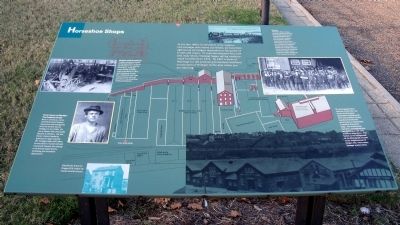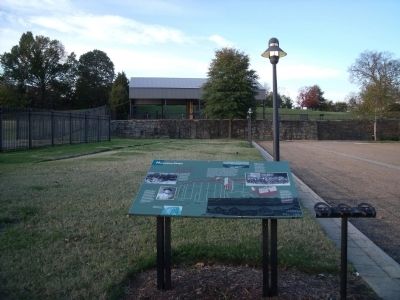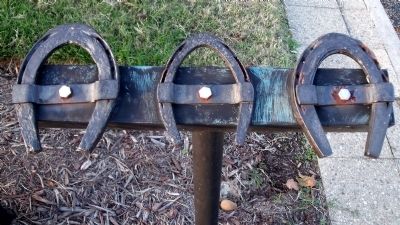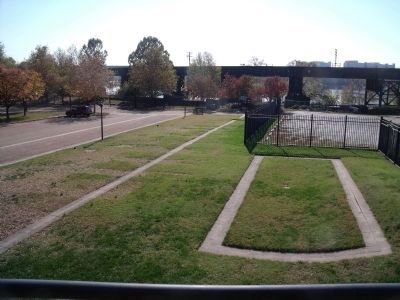Gambles Hill in Richmond, Virginia — The American South (Mid-Atlantic)
Horseshoe Shops
Machine-made Horseshoes
Tredegar hired J.H. Snyder in the early 1870’s to develop machinery for making horseshoes. Tredegar began selling machine-made horseshoes in 1873, and employees Snyder, H.C. Osterbind, and Peter Greenwood all received patents for the horseshoe-making equipment.
From Laborer to Manager: The Osterbind Family
Born in Germany, Anton Osterbind joined African Americans and immigrants from the British Isles at Tredegar in the 1840s. He was a laborer who eventually became foreman. His son, Henry Carter Osterbind (pictured at right) entered the Tredegar spike mill when he was about 15 years old and eventually became the manager of several departments, including the horseshoe department.
Workers
Horseshoe Shop workers included skilled machinists, semi-skilled operators and unskilled laborers who moved the raw materials and finished products. Machinists could cut, fit, and fabricate metal on a variety of machines; operators merely fed heated metal blanks into a single machine, which formed the horseshoe in several strokes. Most skilled and semi-skilled jobs were reserved for whites.
Topics. This historical marker is listed in this topic list: Industry & Commerce. A significant historical year for this entry is 1873.
Location. 37° 32.089′ N, 77° 26.809′ W. Marker is in Richmond, Virginia. It is in Gambles Hill. Marker can be reached from Tredegar Street, 0.1 miles west of South 5th Street. This marker is located outside the Civil War Visitor Center at Tredegar Iron Works. Touch for map. Marker is at or near this postal address: 470 Tredegar Street, Richmond VA 23219, United States of America. Touch for directions.
Other nearby markers. At least 8 other markers are within walking distance of this marker. Tredegar in the Twentieth Century / Then and Now (a few steps from this marker); Tredegar Rolling Mills (within shouting distance of this marker); Making Machines at Tredegar (within shouting distance of this marker); What’s That? (within shouting distance of this marker); Belle Isle Prison (within shouting distance of this marker); Belle Isle and Old Dominion Iron and Nail Works (within shouting distance of this marker); Gateway to the Civil War (within shouting distance of this marker); The Bulldozer Press (about 300 feet away, measured in a direct line). Touch for a list and map of all markers in Richmond.
Regarding Horseshoe Shops. On the upper left is a photograph of horseshoe-making equipment. On the lower left is a photo of Henry Carter Osterbind and a photo of the "Osterbind’s home in Oregon Hill, where he owned several houses."
In the center is a diagram of Tredegar's layout based on a 1951 map.
On the right is a photograph of Tredegar workers and a photograph of the horseshoe department with the caption, "The photograph below from the World War I era shows the horseshoe department looking north from your position, including (from the left) two stock houses or warehouses, a machine shop and a forge. The stock houses had been consolidated into one building in the 1951 insurance map above. The homes in the background of the photograph are part of the neighborhood of Oregon Hill, where many Tredegar workers lived."
Credits. This page was last revised on February 1, 2023. It was originally submitted on November 6, 2009, by Bernard Fisher of Richmond, Virginia. This page has been viewed 783 times since then and 13 times this year. Photos: 1, 2, 3. submitted on November 6, 2009, by Bernard Fisher of Richmond, Virginia. 4. submitted on November 12, 2009, by Bernard Fisher of Richmond, Virginia.



